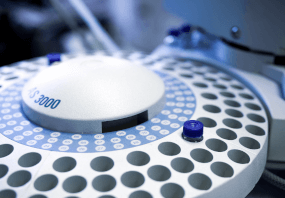Hepases, derived from microorganisms, are polysaccharide lyases that cleave the a-1,4 glycosidic bond between N-acetylglucosamine (GlcNAc) and hexuronic acid (GlcUA/IdoUA) through a typical b-elimination mechanism. They generate an unsaturated double bond with specific absorption at 232 nm at the C4 and C5 positions of hexuronic acid, which facilitates the analysis and detection of enzymatic hydrolysis products. HEPases have been identified in Hep/HS degrading bacteria, such as Flavobacterium heparinum, Bacteroides thetaiotaomicron,Bacteroides stercoris,Sphingomonas, Bacillus , Pseudomonas aeruginosa[ Wait. HEPases can be divided into three categories based on substrate selectivity: HEPase I selectively degrades the high sulfation zone in Hep and HS; HEPase III selectively degrades the low sulfur acidification zone in HS and Hep; HEPase II can degrade both Hep and HS simultaneously. The above three types of HEPases belong to endonucleases, and recently a heparin exonuclease family (exoHEPases) has been discovered for the first time. HEPases, as an important tool enzyme, are widely used in the structural and functional research of Hep/HS, the production of low molecular weight heparin, quality testing and consistency evaluation of heparin drugs, etc. We can provide customers with various known types of HEPase enzyme preparations according to their needs, meeting their various requirements from analysis and detection to large-scale production.
Specifictaions: EnzymoPure™, ≥200(U/mg),from Flavobacterium heparinum
Related Documents: https://ald-pub-files.oss-cn-shanghai.aliyuncs.com/aladdinsci/pdp/sds/1/H766343-SCI_46ea5048fc9003009aa77c90b7c3eb10.pdf
- UPC:
- 51131602
- Condition:
- New
- Availability:
- 4-8 weeks
- Weight:
- 1.09 Ounces
- HazmatClass:
- No
- WeightUOM:
- LB
- MPN:
- H766343-10U
- Product Size:
- 10U












